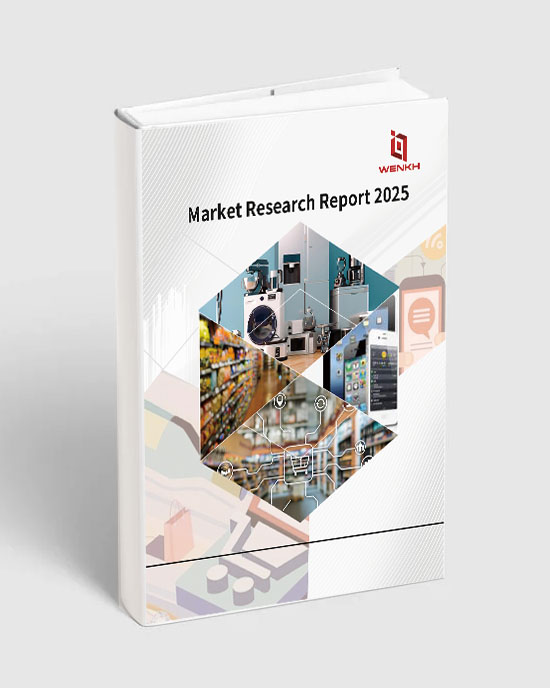
Global Microbial Biosurfactants Market Competitors, Segment Types and Downstream Applications Research Report 2025



Research Summary
Microbial biosurfactants are natural compounds produced by certain microorganisms, typically bacteria or fungi, that have surface-active properties. These compounds are molecules that exhibit both hydrophilic (water-loving) and hydrophobic (water-repelling) properties, allowing them to lower surface tension and interact with both water and oil. Biosurfactants produced by microorganisms are diverse in structure and function, including glycolipids, lipopeptides, phospholipids, and lipopolysaccharides, among others. These biosurfactants have numerous applications in various industries, such as agriculture, environmental remediation, pharmaceuticals, cosmetics, and bioremediation. They can improve the solubility and dispersion of hydrophobic compounds, enhance oil recovery in petroleum industries, act as emulsifiers or foaming agents in the food and beverage industry, and have antimicrobial and anti-adhesive properties. Additionally, microbial biosurfactants are known for their low toxicity, biodegradability, and eco-friendly nature, making them attractive alternatives to synthetic surfactants. Their potential in industrial and environmental applications has led to increased interest in harnessing microbial biosurfactants for a wide range of purposes.
According to WENKH research statistics, the global Microbial Biosurfactants market size will reach 43.22 Million USD in 2025 and is projected to reach 63.58 Million USD by 2032, with a CAGR of 5.67% (2025-2032). Among them, the Asia-Pacific Microbial Biosurfactants market is undergoing rapid changes, reaching Million USD in 2025, accounting for approximately % of the global market share. It is projected to reach Million USD by 2032.
The global Microbial Biosurfactants market is highly competitive, with key market players including Jeneil Biosurfactant, AGAE Technologies, Stepan, Rhamnolipid Companies, GlycoSurf, Evonik, TensioGreen, etc. This report categorizes the competitive landscape of the global Microbial Biosurfactants market into three tiers based on annual revenue, with the top three market players holding approximately % of the total market share.
This report provides an in-depth analysis of the global Microbial Biosurfactants market, including market size, price trends, market status and future development prospects. It particularly focuses on the market share, product characteristics, pricing, revenue, sales volume and gross profit margin of major manufacturers in the global Microbial Biosurfactants industry. Additionally, this report provides an in-depth analysis of the market status and future development trends of different segments of Microbial Biosurfactants and their downstream application fields.
In terms of data coverage, this report includes extensive time-series data. Historical data spans from 2020 to 2024, providing a solid foundation for analyzing market development trends. The year 2025 is used as a base year to accurately assess the current market landscape, while forecast data extends from 2026 to 2032, using scientific analysis methods and models to offer forward-looking projections and insights into the market's future trajectory. This provides valuable reference information for industry participants and stakeholders.
The report covers countries including United States, China, Germany, Japan, France, South Korea, United Kingdom, India, Italy, Brazil, Mexico, Indonesia, Vietnam and South Africa. It particularly focuses on the revenue and sales volume of Microbial Biosurfactants in these countries, as well as the product segmentation and downstream application market size of each country. The report provides an in-depth analysis of the regional distribution and future development trends of the Microbial Biosurfactants market. By considering local policies, this report evaluates the market prospects of Microbial Biosurfactants in each country, aiming to help companies gain a comprehensive understanding of the industry characteristics and development potential in different regions, optimize regional business layout, and develop precise market strategies to achieve global development goals.
This report places significant emphasis on data quality and reliability, leveraging a wide range of data sources to ensure accuracy and validity. Primary data collection is conducted through multiple channels, including in-depth interviews with senior corporate executives, industry experts, supply chain participants, and end consumers. This helps to gain insights into corporate strategic planning, industry policies, supply chain dynamics, and user experiences. Secondary data sources cover an extensive range, including authoritative government statistics, customs databases, industry related reports, third-party paid databases, investment research reports, academic studies, corporate financial statements, real-time media updates, and information from international organizations, all of which serve as a solid foundation for data verification and analysis.
Companies Covered
Jeneil Biosurfactant
AGAE Technologies
Stepan
Rhamnolipid Companies
GlycoSurf
Evonik
TensioGreen
Product Segment
Rhamnolipids
Sophorolipids
Others
Product Application
Agriculture
Oil Industry
Environmental Protection
Food Industry
Cosmetics and Daily Chemicals
Pharmaceuticals
Others
Chapter Scope
Chapter 1: Product Statistical Scope, Product Segmentation Types and Downstream Applications, Overall Market Size, Current Status and Development Prospects
Chapter 2: Global Microbial Biosurfactants Industry Chain Analysis
Chapter 3: Global Microbial Biosurfactants Industry Environment Analysis and Porter's Five Forces Analysis
Chapter 4: Analysis of the Competitive Landscape of Major Companies in the Global Microbial Biosurfactants Market (Market Share, Product Revenue and Sales Volume Comparison, Tier Division, Corporate Expansion and M&A Trends)
Chapter 5: Analysis of Global Major Companies (Company Profiles, Product Specifications and Features, Product Revenue, Product Sales Volume, Product Average Price and Product Gross Profit Margin)
Chapter 6: Global Microbial Biosurfactants Market Analysis by Countries, Product Segment and Downstream Application (Sales Volume, Revenue and Average Price)
Chapter 7: United States Microbial Biosurfactants Market Size, Product Segment, Downstream Application Analysis (Sales Volume, Revenue and Average Price)
Chapter 8: China Microbial Biosurfactants Market Size, Product Segment, Downstream Application Analysis (Sales Volume, Revenue and Average Price)
Chapter 9: Germany Microbial Biosurfactants Market Size, Product Segment, Downstream Application Analysis (Sales Volume, Revenue and Average Price)
Chapter 10: Japan Microbial Biosurfactants Market Size, Product Segment, Downstream Application Analysis (Sales Volume, Revenue and Average Price)
Chapter 11: France Microbial Biosurfactants Market Size, Product Segment, Downstream Application Analysis (Sales Volume, Revenue and Average Price)
Chapter 12: South Korea Microbial Biosurfactants Market Size, Product Segment, Downstream Application Analysis (Sales Volume, Revenue and Average Price)
Chapter 13: United Kingdom Microbial Biosurfactants Market Size, Product Segment, Downstream Application Analysis (Sales Volume, Revenue and Average Price)
Chapter 14: India Microbial Biosurfactants Market Size, Product Segment, Downstream Application Analysis (Sales Volume, Revenue and Average Price)
Chapter 15: Italy Microbial Biosurfactants Market Size, Product Segment, Downstream Application Analysis (Sales Volume, Revenue and Average Price)
Chapter 16: Brazil Microbial Biosurfactants Market Size, Product Segment, Downstream Application Analysis (Sales Volume, Revenue and Average Price)
Chapter 17: Mexico Microbial Biosurfactants Market Size, Product Segment, Downstream Application Analysis (Sales Volume, Revenue and Average Price)
Chapter 18: Indonesia Microbial Biosurfactants Market Size, Product Segment, Downstream Application Analysis (Sales Volume, Revenue and Average Price)
Chapter 19: Vietnam Microbial Biosurfactants Market Size, Product Segment, Downstream Application Analysis (Sales Volume, Revenue and Average Price)
Chapter 20: South Africa Microbial Biosurfactants Market Size, Product Segment, Downstream Application Analysis (Sales Volume, Revenue and Average Price)
Chapter 21: Research Conclusion
Chapter 22: Methodology and Data Source
Purpose and Value of the Report
Market Trend Insights: Analyze industry trends, market dynamics, and future growth potential to help companies forecast changes and develop strategic plans.
Competitive Landscape Analysis: Understand key players' revenue segmentation, strategies, market share, and business models to guide competitive decisions.
Investment Decision Support: Provide feasibility analysis through market size, growth rate, demand trends, and potential risks for informed investment decisions.
Target Customer and Demand Analysis: Examine consumer behavior, purchasing preferences, and pain points to optimize products and improve market penetration.
Policy and Regulatory Insights: Interpret relevant industry policies to ensure compliance and mitigate regulatory risks.
Business Model Optimization: Offer data-driven suggestions for enhancing business models and improving profitability.









